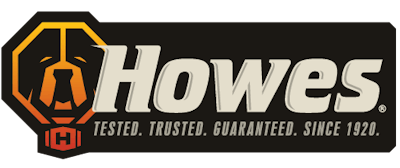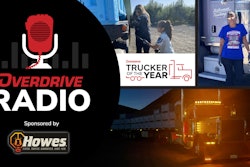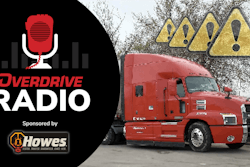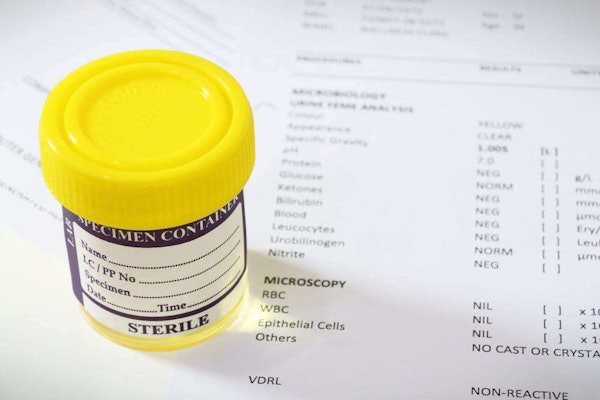"So we're going down the road, we've got a mudflap missing, and we've got an ABS lamp on the trailer lit up. What does that mean?"
This week's edition of Overdrive Radio starts with that question, posed by former truck operator and longtime compliance consultant Jeff Davis. With his Fleet Safety Services business, operating out of a home base in Ohio, Davis has been a regular presenter at the National Association of Small Trucking Companies' annual conference now for years. At the NASTC show this past November he addressed a packed house of owner-operators and other small fleet owners on the topic of practical steps to take to avoid inspections.
The answer to the question, as immediately noted by one of the owners in attendance: "Inspect me!"
Regular listeners will recall those trailer malfunction indicators were a focus of the Roadcheck 2023 inspection blitz, and leading into the event Overdrive found that warning-light systems on trailers accounted for well more than half of all air-brake-related ABS violations.
[Related: The toughest 10 states for load-securement violations: Are you Roadcheck-ready?]
There’s a reason for that, as Davis noted. When something’s awry, that light comes on, giving an easy visual cue for an officer to inspect. And if you’re inspected, well, there’s a likelihood of violations, and issues then can compound for you or your small fleet.

 Overdrive Radio's sponsor is Howes, longtime provider of fuel treatments like its Howes Diesel Treat anti-gel and Lifeline rescue treatment to get you through the coldest temps, likewise its all-weather Diesel Defender, among other products.
Overdrive Radio's sponsor is Howes, longtime provider of fuel treatments like its Howes Diesel Treat anti-gel and Lifeline rescue treatment to get you through the coldest temps, likewise its all-weather Diesel Defender, among other products.
In the podcast, Davis further emphasizes all kinds of ways you can minimize the likelihood of getting sideways with auditors and roadside officers, without just bypassing the scale houses altogether. Not all of it is as obvious as the ABS light, yet for the rest of the lighting system, Davis offered a simple way owners can give themselves or their drivers a better chance of catching issues before the inspector does -- or has to, as it were.
[Related: Roadside inspections, safety scores should be 'preventive,' not punitive]
Repeat this like a mantra so it fully sinks in, he advised:
"Every light, burns every mile, every day."
"Every light, burns every mile, every day."
"Every light, burns every mile, every day." ...
Except for the ABS light on your trailer, of course. Take a listen for much more:
More on getting Roadcheck-ready (the annual inspection blitz is upcoming in mid-May), and generally ready for any inspection that might come your way:
**Roadcheck 2024 focusing on drug/alcohol, and the tractor-protection valves in the air system
**How to avoid/ace inspections -- reporting ahead of Roadcheck 2023
**Overdrive's long-running CSA's Data Trail series -- including data analysis showing where inspections are most likely
[Related: 'Advanced ELD auditing': How small fleets, independents can work to prevent adverse ratings]
Jeff Davis: So we're going down the road. We got a mud flap missing and we got an ABS lamp on the trailer lit up. What does that mean? Inspect me. Inspect me. It says, come inspect me. I'm lonely.
Todd Dills: So that was just a bit of the wisdom of the many years of experience behind the wheel to where he is today as consultant for fleets, mostly small and some larger, maybe the wisdom of one. Jeff Davis and his Fleet Safety Services business, operating out of a home base in Ohio. He's been a regular presenter at the National Association of Small Trucking Companies’ conference now for years, and that's where I caught the audio you heard there. Davis was addressing a packed house of owner-operators and other small fleet owners on the topic of practical steps to take to avoid inspections. That is, you just don't need it. I'm Todd Dills, your host for this February 23rd, 2024 edition of Overdrive Radio, where we'll hear more about that ABS malfunction indicator on the trailer. Regular readers will recall those trailer malfunction indicators were a focus of the 2023 Roadcheck inspection blitz and leading into the event, I found that warning light systems on trailers accounted for, well more than half of all air brake related ABS violations.
There's a reason for that. As Davis noted, when something's awry, that light comes on giving an easy visual cue for an officer to inspect. And if you're inspected well, it's the likelihood of violations and issues then that can compound for you or your small fleet. This year, Roadcheck’s focus is drug and alcohol, but another piece of the braking system too, namely the Tractor Protection System. That's a fail safe designed to keep pressure in the air system in the event of a big loss somewhere. My colleague, Alex Lockie here with Overdrive this week spoke to Jeremy Disbrow with CVSA, an inspection specialist and longtime law enforcement officer, about how they checked the Tractor protection system. Standard part of level one inspection Disbrow said many among operators he's experienced through the years take the wrong approach to it. Here's what inspectors do to make certain it's working correctly, maintaining at least 20 PSI in the system.
Inspectors typically chock the wheels to make sure the truck doesn't roll away, then release all its brakes, then pop both gladhands, remove the gladhands from the truck and trailer and listen to the air escaping. Once it stops, they go back up to the cab and as long as pressure in the system is 20 PSI or higher as well. If testing that valve that way isn't part of your pre-trip, consider it making it one. Jeremy Dispo said, and the way lesser approaches to the process he added, he noted a lot of guys think they're testing for it when they pump down the brakes and wait for the dash valve to pop out, but it's not really the same thing. Find Alex Lockie’s reporting with more detail from that overview for Roadcheck this year, helping in mid-May at overdrive online.com. I'll post the link to it in show notes too. As for downstream ramifications of any individual inspection, Warren McCurdy's story from a couple weeks back wasn't enough. Jeff Davis at the Nastic Conference sought to emphasize ways you can minimize the likelihood of getting sideways with auditors and roadside officers. And here's how he sets the stage for the talk.
Jeff Davis: What we want to do today is hopefully help you in the future with your roadside inspections and how to prepare for a DO two auto. Those two things go hand in hand. Number one, how do we avoid roadside inspections? You say, Jeff, why do you want to talk about that? Well, the reason I want talk about how to avoid roadside inspections is its roadside inspections eventually work right into A DOT compliance, which eventually works into your insurance, which eventually works into the courtroom. So you have a number of things going on that start with a roadside inspection.
Todd Dills: Jeff Davis then asked for questions from the audience by which he could tailor his talk. Given the subject, they duly came.
Jeff Davis: Question is how do you volunteer for an inspection? Okay, any other question? Good question. We'll get to it.
Todd Dills: Better yet. Davis summarized the next question this way.
Jeff Davis: Why would you volunteer for this? That's a better question.
Todd Dills: Clearly he touched a nerve with this topic. Another small fleet owner in the audience asked about the quandary of having no inspections on the official record in this day and age and trying to work with the myriad brokers in the marketplace. So many, he said, you a carrier with no inspections, defacto is a potential double broker, not a risk worth taking. The question spawned a veritable eruption of discussion throughout the room as another owner then set Davis up of what was to come Amid all the crosstalk with this,
Jeff Davis: The question is, does law enforcement have criteria and how they choose you for a roadside spectrum? I owe you 50 bucks. You just set me up perfectly.
Todd Dills: After the break, more on that question and reemphasis of the import of any adverse roadside inspection as it flows through the federal CSA safety measurement system into the Federal compliance Review program and owner-operators and other small fleets’ insurance rates, prospects for business and more. So keep tuned.
Speaker 3: Are freezing temps putting the brakes on your diesel engine? For unbeatable protection against diesel fuel gelling. Trust the experts at Howes Products. Stock up on Howes Diesel Treat, the nation's most trusted anti-gel, to be safe from the harshest winter conditions. Make sure you have House Diesel lifeline on hand, the fastest acting gelling rescue product available nationwide. Howes Products are designed to keep you rolling through the toughest conditions. Howes. Tested, trusted, guaranteed. Visit HowesProducts.com.
Todd Dills: That’s H-O-W-E-S Howesproducts.com. If you're looking ahead to the Mid-America Trucking Show next month, March 21st through the 23rd in Louisville, Kentucky, no doubt join Overdrive at the big Partners of Business seminar Friday the 22nd at 2:45 PM with ATBS on owner-operator survival strategies and tactics to thrive in any down market at like the present, but keep an eye out for news from Howes as well about a new inductee into their Howes Hall of Fame in addition to more from the company. Stop by their booth there and tell them Todd from Overdrive Radio sent you. Hope to see you in Louisville.
Okay, here's Jeff Davis getting into the meat of his talk around the full import of roadside inspections, at the National Association of Small Truck Companies’ conference in Nashville this past November. Here we go.
Jeff Davis: My job is to help motor carriers. I love working with the smaller carriers. I work with large carriers and small carriers. I work with a number of motor carriers that are going through the new entrance process. Just give you an idea of that. In the state of Ohio each month right now there's 543 new entrances coming into the state at any one month at a time. So it's a huge overflow of new carriers coming in. But what we want to talk about is how can we run our company better? How can we stay? How can we avoid roadside inspection? When I started going over this stuff, people thought was crazy. All no, you can't avoid roadside inspection. I really think you can. I think the data is out there. I think it's really obvious of how you can work through as you drive down the road, how you can avoid those inspections.
Then the reason being is the more inspections you avoid, alright? The slower, the lower your scores. It's absolute proven fact that the more they inspect you, the more violations they're going to find. The less they infect inspect you, the less violations they're going to find. So the key is how do we drive our trucks down the road without getting roadside inspection? I'll give you an example. Last year Indiana gave 5,000 tickets to truck drivers or 5,000 inspections to truck drivers that did not wear their seatbelt. So 5,000 times I've got the state enforcement officer on video saying, you know what that is? That's 5,000 drivers. They gave me excuse to look inside their truck. So when we start looking at some of the data, we'll see that most of the roadside inspections, in fact, well over 50% and even 70% in some cases can be avoided if we did the right things at the right time.
When you look at the fiscal year of roadside inspections with CSA database just came to a close and when you look at it, you'll see that 33%, almost 34% of all roadside inspections were done on fleet sizes from one to six. So out of the 3000002.9 million inspections that we had last year, about 34% of them were on small fleets. Now the question is, how many small fleets are there versus large fleet trucks? So on so forth. That should be very eye opening. So when you're driving down the road and you get a potential for a roadside inspection, alright, the investigators will use their software, which is one of our questions, which we'll get into out to pull you over and one to pull you over. In some cases, 34% of the time fleets one to six, 50% of the time fleets one to 20.
So a lot of small carriers are getting a lot of roadside inspection and you say, well, hey, I've got two trucks. I've been running for three years and I've had one roadside inspection. Great. If you want more, call me and I'll call the state director and I'll get you as many as you want. But I don't think you want that. That's a good thing. It can be tough with brokerages trying to prove that you're really in business, alright? And I don't know there's a good answer for that other than get some roadside inspections. I'll show you how to do that, but you might not want 'em because you'll get violations when we do. Hey, what are the consequences of roadside inspection? It all starts with driver performance. It's what we do as drivers. It's what your drivers do, the way they perform and drive on the road, which initially will issue you your CSA scores.
So if you have drivers with no violations, you'll have low scores, you'll have enough data in there to get a score, and you'll look good at least in the CSA scorecard if the opposite happens. If you end up getting a number of inspections and you get into the alert status, I think one of the questions is how do you know if you're going to get audit or where are you in the audit scale? What they do in state to state is each month, federal Motor Carrier Safety Administration sends out to every state a ranking of the motor carriers, basically how many alerts they have, what their scores are, and then each state can manually break up those audits. I'll give you an example. In Ohio, Ohio's divided into four qurans and they divide the motor carriers by domicile into the four different sections, and then they divide it by auditor and it comes up as a ranking on their laptop, just like the top 10 in football or the a p eight rankings.
So the carriers with the highest violations, highest numbers, highest alerts go high on the list. Now, there's another reason for an audit. The other main reason I see for audits are direct complaints. If a driver complaints to the F-M-C-S-A, the F-M-C-S-A determines that's a non frivolous complaint, then at that point they can initiate investigation. But usually today, in most cases, it's driven by your CSA score. So your driver performance equals your CSA scores. Your CSA scores are what initiates an audit. And eventually that will initiate your safety fitness rate. See how that works. So if we control the data at the top, the input of our data, our driver performance, not easy to do, but if we're able to do that, if we hold our drivers accountable, if we have a good safety culture, that will eventually lower our scores. Once we go lower our scores, we'll be less on the audit radar. Make sense? Now, all we have to do is just control roadside inspections. That's the beginning point. So we'll work with that. When we look at roadside inspections, and this is data that's gone on for two or three years, some rough numbers here. We know that when we look at all three or 2.9 million, 3 million inspections, we know that about a third of the time, the inspections triggered by observable defect about a third of the time, the inspection's triggered by unsafe driving. And a third of the time, it's driven by the motor carrier's. ISS.
Todd Dills: That's ISS or inspection selection system. Every motor carrier has an ISS rating is regular listeners and longtime overdrive readers will be well aware that ISS number has a big effect on the efficacy of bypass systems like Pre-Pass and Drivewise for pre-clearance have a high ISS score. Those systems are going to be less effective for actually getting the green light and bypass than scales high ISS numbers for any motor carrier. Davis goes on to explain, mean effectively a greater priority placed on that carrier for inspection all across the country, you're operating with motor carrier authority. Do you know what your ISS number is? Not many in the room with Davis at Ntic did. That's sure. You've got just three hands raised in the affirmative in response to the same question there.
Jeff Davis: Each trained individual on the highway that's doing roadside, what they do is they put in your DOT number, alright? And it brings up the software, literally brings up a stoplight red, green, yellow. If you're one to 49, that green light, 50 to 74, that's yellow light means you may look maybe worth a look. And if you're above 75, you get the red light. Okay? And those lights, those numbers are based upon your past compliance history. So if you've had a lot of violations in the past, possibly you're up to an alert status in a couple of your CSA basics, then you will have a high ISS score. It doesn't mean you're going to be inspected every time, but it does mean that if it's between you and another Miller truck, a high ISS score will cause that roadside inspection. Now, here's the trick. I've seen carriers that had no CSA scores.
They had an adverse DOT audit, had some critical violations in the DOT. By the way, your CSA score has nothing to do with your safety rating score. It is apples and oranges. They are not the same. They're calculated different. So I've seen motor carriers that have had low CSA scores. They're ISS number getting the green light. 20 30 15 18, they have an adverse audit, and if they have an adverse audit, they quickly go up to the yellow light on the roadside. And if that audit contained critical violations in the hours of service, you automatically go to the red light. So if you have a DOT audit, they come in, they take your ELDs, they suck it down into the eons auditing program, and you end up with a critical violation and it ends up being an enforcement, your score on the road will go to red light.
It'll go 75 and above, usually mid nineties, and it'll stay that way until you correct that alert. Make sense? So if you have a critical violation in the office, it shows up on the road. Hours of service is the only SMS score that automatically puts you up into the alert category. Everybody should know your ISS number. And where you find it is if you log into your SMS scorecard on the homepage, you scroll all the way to the bottom, you'll see carrier history and you'll see ISS score. You can click on that and that will show you what your score is. Any questions on that? That was on the FM CSA portal? Yes. Or actually the f, the SMS scorecard, which you can find on the portal or log directly into it. All right, we're good. Let's keep moving here. Here we are crossing the scale. First thing the scale master's going to do is put in the DOT. Number up comes the software, and in this case, it shows that we're in the inspect category because we have some alerts. Doesn't mean they use this every time, but when they do need an inspection, they will go to this ISS. Many times we've already shot ourselves in the foot. Before we get to that point
Todd Dills: Here, a question from the audience as summarized by Jeff Davis.
Jeff Davis: The question is, if you get into the red category, how do you get out of that? Is it just a passing of time? Well, time does heal a broken heart to some degree because some of your violations will drop off. The algorithm for your ISS number is about 10 pages long. So it takes in a bunch of different factors of how they read. So the answer to your question is don't get any more violations. Stop. Because every violation going into your CSA scorecard is triple weight,
Todd Dills: Triple weighted for the first six months. It's on a carrier's C-S-A-S-M-S profile. That is then another question, again summarized by Davis.
Jeff Davis: The question is, and I see I can't avoid this anymore. We've got, what can we do with a corrective action to bring them in to look and see what we've done? Okay. Technically by policy it doesn't mean that it's a hard, fast rule, but I've seen very few incidents where they'll come in under a request and inspect a vehicle. Okay? They're monitored very closely on that. They don't want to go down that trail because motor carriers, I believe, could set up different things to get a bunch of clean inspections. Okay? So yeah. Well the point is, they can't catch you and do your job when you're out on the road when you have a chance of something great. So there's real no good way of doing this that I'm aware of. Okay? Sorry for the good news, but it works out way. Alright, we're going to play this game. We did this last year. Look at this roadside inspection. What's my trigger event? Littering a cigarette butt on the window of a patrol car.
What caused that inspection? Right? I know. Look at this. What did the driver have a false log? You're telling me that that roadside inspector had x-ray vision? He looked through that truck, he saw that log was false. The driver just happened to throw a cigarette but out the window, I'm going to go get that person. No, it was the trigger event that caused it. Here's another one hard to read. In the back. We got mud flap defective a BS indicator lamp on the trailer, and we've got insurance violation. So we're going down the road, we've got a mudflat missing and we got an a DS lamp on the trailer lit up. What does that mean? Inspect me. Inspect me. It says, come inspect me. I'm lonely. I want to see an inspector. I want, I want to get my 25 bucks. Except you're not going to get 25 bucks because an a BS light, once you're moving and hooked up down the road, it must be or out I go into motor carriers and I see they had 10 a DS lights on trailers.
I did a case study with a client about a month ago. This blew my mind about a hundred drivers. I broke down all their roadside inspections and guess what? 85% of all their violations happened at a scale. Now I'm from the old school trucker. I truck back when you had to crank 10 Lizzie together, going back in those days, we never went over the scale yet. So we got one driver, I'm going to call Billy. I'm living this roadside inspection. And the roadside inspection says that there was a semblance of a tire hanging in the rim as the driver went over the scale. This honestly this smart, but inspector writes that on
Todd Dills: Regular listeners will well recall Warren McCurdy's experience of rolling across a Washington scale with a flat trailer tire situation that led McCurdy to experience the impacts of inspection violations Davis is talking about here. In McCurdy's case, he truly did not know the tire had lost. Eric had the trailer was empty, and it appeared to have happened in transit before he got to the scale. In the case that Davis mentioned, though, the outcome wasn't quite the same, to say the least
Jeff Davis: So I call the owner and I say, Hey, no big deal, but this is pretty weak. Alright, what did the driver say? And he had talked to the driver, called the driver in driver said, boss, I'm really sorry. I knew that tire was that way, but I thought the scale house was on the other side. I thought they'd never see on the other side of the street. 70% of all their roadside violations happening right at the scale. Do these scales move? No. No. They're set places and most of their drivers, guess what are a dedicated run? So you're telling me you're going over the scale with baloney skins had no lights on, no seatbelt on, and you just want to wave at the investigator to drive. Here's another one, Bailey to secure load cardboard boxes and plastic trash loose in the bed with plastic flying out while driving.
Got into driver, didn't have a valid of medical, it went on from there. So again, that's the trigger a bit. Here's another one. Break smoke in forth axle. The left side, I guess the break had a couple cigars in there. There was smoke driver's going down the road, tires on fire, doesn't realize. It triggers the roadside inspection. IRP plate annual inspection violation, so on so forth. Here's one using a handheld telephone while arbing A CMV. Left hand. Left ear speeding, 11 to 14 per hour. 67 in a 55 construction zone, failing to yield for four miles. Driver was completely distracted by the humble park. What do you expect? What do you expect an expect to do? Must be a good conversation I'll through instructions.
Now, these are silly illustrations, but I can show you that the number one key to lower your CSA scores you ready for this thing is, this is seeking, I don't want this to get out anywhere. Okay? Here's your number one key to lower your CSA scores. Every light burns every mile, every day, every light burns, every mile, every day, every light burns, every mile, every day, except for the ABS light on your trailer, and it must be … Off! Statistically, lights are the number one trigger event by far across the whole United States. Now, the key is how do we get the driver to drop the trailer with the light out to tell somebody, or you take the time to get it fixed or the driver to fix it up. That's where the route comes in. I've had carriers focus solely on their lights and over a period of time, it takes about 18 months. They drop the number of roadside inspections they had and they dropped their CSA score just by focusing on lights. That's what the data tells us as enough. We've got a ton of data to manage out there. We've got critical event data, we've got camera data. We've got CSA data. We got ELD data, we got all sorts of stuff going on out there. Okay, let's try to bring it down to just a couple basic things that the agency wants us to do.
Todd Dills: Simplify things. In other words, spend more effort at the root of many an owner-operator and or small fleets, compliance related problems. Do the things that would give you a better chance of catching issues before the inspector does or has to, as it were. Again, if you didn't hear Davis the first, or wait, how many times was it?
Jeff Davis: Every light burns every mile, every day …
Todd Dills: One,
Jeff Davis: Every light burns, every mile, every day …
Todd Dills: Two,
Jeff Davis: Every light burns, every mile, every day, except for the ABS light on your trailer. And it must be. …
Todd Dills: Hope to see you at MATS in March. Find more on the subject of inspections with links in the show notes for this Overdrive Radio edition. Wherever you listen. Overdrive Radio is on Spotify, SoundCloud, apple and Google Podcasts. Tune in, most any platform. Subscribe so you don't miss an episode. And if you're enjoying these, leave us a rating or review there. Big thanks in advance.













